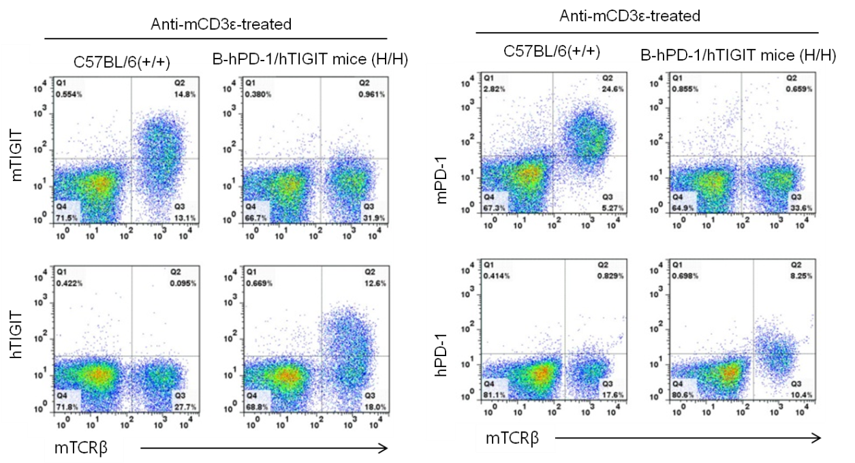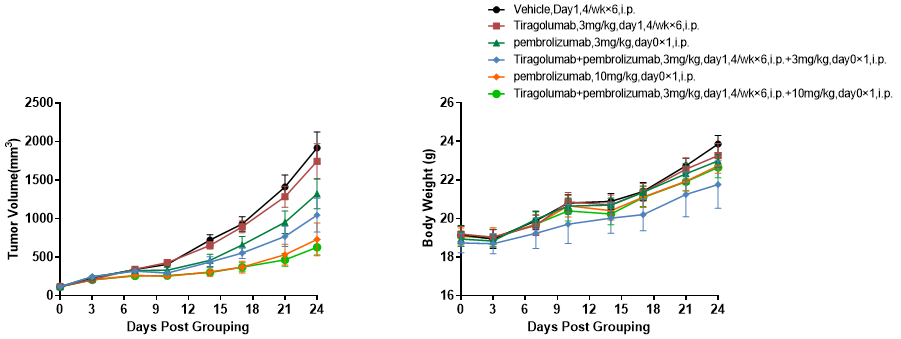| Strain Name |
C57BL/6-Pdcd1tm1(PDCD1)Bcgen Tigittm1(TIGIT)Bcgen/Bcgen
|
Common Name | B-hPD-1/hTIGIT mice |
| Background | C57BL/6 | Catalog number | 120523 |
|
Related Genes |
PD-1 (Programmed death-1) ; TIGIT (T-cell immunoreceptor with Ig and ITIM domains) |
||
|
NCBI Gene ID |
18566,100043314 | ||
Protein expression analysis


Strain specific TIGIT and PD-1 expression analysis in homozygous B-hPD-1/hTIGIT mice by flow cytometry. Splenocytes were collected from WT and homozygous B-hPD-1/hTIGIT mice (H/H) mice stimulated with anti-CD3ε in vivo (7.5 μg/mice), and analyzed by flow cytometry with species-specific anti-TIGIT antibody. Mouse TIGIT and PD-1 were exclusively detected in WT mice. Human TIGIT and PD-1 were exclusively detected in homozygous B-hPD-1/hTIGIT mice but not WT mice.
Combination therapy of hTIGIT Ab(Tiragolumab (in house)) and PD-1 Ab(pembrolizumab)

Antitumor activity of anti-hTIGIT antibody Tiragolumab (in house) combined with anti-hPD-1 antibody pembrolizumab in B-hPD-1/hTIGIT mice. (A) Anti-hTIGIT antibody Tiragolumab (in house) combined with anti-hPD-1 antibody pembrolizumab inhibited MC38 tumor growth in B-hPD-1/hTIGIT mice. Murine colon cancer MC38 cells (5×105) were subcutaneously implanted into homozygous B-hPD-1/hTIGIT mice (female, 5-8 week-old, n=6). Mice were grouped when tumor volume reached approximately 150±50 mm3, at which time they were treated with anti-hTIGIT antibody Tiragolumab (in house) combined with anti-hPD-1 antibody pembrolizumab with doses and schedules indicated in panel (B) Body weight changes during treatment. As shown in panel A, combination of anti-hTIGIT and anti-hPD-1 antibody shows more inhibitory effects than individual groups, demonstrating that the B-hPD-1/hTIGIT mice provide a powerful preclinical model for in vivo evaluating combination therapy efficacy of hTIGIT antibodies and hPD-1 antibodies . Values are expressed as mean ± SEM.









